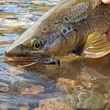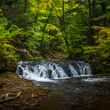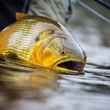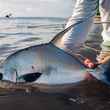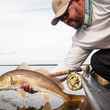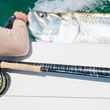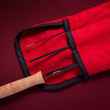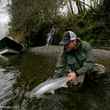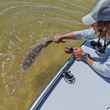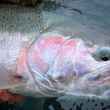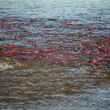As I stood on the bow of a Palometa Club panga which bobbed heartily in the chop running across Mexico's Ascension Bay, stiff 9 weight doubled over and my arm aching from battling the barracuda that was leashed to the end of my line, I thought mostly about landing the monster that had been thrashing about at the end of the line threatening to unbutton the jam knot on the wire leader that held on my fly. We'd been at it for almost 20 minutes and the barracuda showed no signs of tiring. Having not gotten a great look at the fish before it emerged from the depths to attack the gaudy fly I had been stripping through the water at the fastest pace I could manage, I was eager to see the beast. Surely it had to be 20 pounds. Possibly 30.
Truth be told, I had missed the cuda was battling. It came upon the boat quickly, and by the time we fumbled the appropriate rod out its holder, the fish had passed. As I started to slide the rod back into its holder, my guide Antonio shouted, hurrying me to get a cast launched and the fly into the water. So I turned and raised the rod, ready to fire a cast at the no-longer-visible fish's tail, or at least where I presumed it would be. "No, no! That way!" He pointed at 10 o' clock off the bow, which was virtually in the opposite direction the fish was headed. A jovial exchange of profanities ensued and, after the target was confirmed, I launched the best cast I could in what seemingly anyone would consider the absolute wrong direction. "Now strip! As fast as you can. No! Faster!".
Seconds later, shouts of "It's coming! It's coming." emerged from both Antonio and my boat mate, Chris. My eyes searched for my fly in the water and as they located it, the barracuda -- which had performed almost a 180 degree turn and dove beneath the panga on its way to attack -- torpedoed from below at an almost incomprehensible speed and exploded from the surface with the fly in its mouth.



